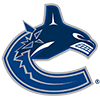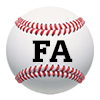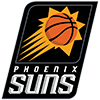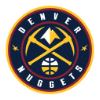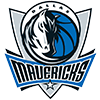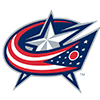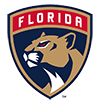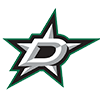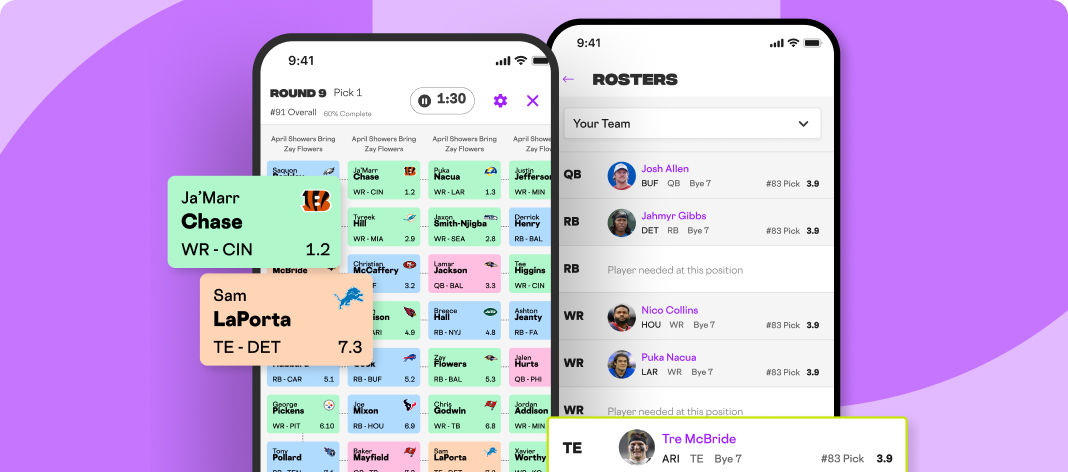With the final FAAB period in most leagues taking place over the weekend, it's a good time to look back at how we apparently should have spent our FAAB dollars over the course of the year. In this article, we'll take a look at players who were drafted in fewer than 10 percent of RotoWire Online Championship leagues but who have gone on to earn at least $1 according to the RotoWire Earned Auction Value calculator.
Of course, it's important to point out that chasing the players who provide the most value over the course of the entire season isn't the only good use of your FAAB budget. It's important to also spend some of your FAAB chasing short-term goals, whether that's streaming starters, adding a temporary closer who will lose his job when his teammate gets back from injury, or riding a hot hand at the plate who you're prepared to dump as soon as he loses playing time.
Overall, though, the biggest impact you can make with your FAAB budget is by adding someone in early April who performs at the level of a top-100 pick — or even a top-20 pick, in the case of the first player we're going to discuss.
Top Widely-Available Hitters
These 11 hitters have been worth at least $1 in 12-team roto leagues according to our earned value calculator and were drafted in at least one RotoWire Online Championship league, yet fewer than 10 percent of such leagues.
| Player | Team | Pos | Rank |
|---|
With the final FAAB period in most leagues taking place over the weekend, it's a good time to look back at how we apparently should have spent our FAAB dollars over the course of the year. In this article, we'll take a look at players who were drafted in fewer than 10 percent of RotoWire Online Championship leagues but who have gone on to earn at least $1 according to the RotoWire Earned Auction Value calculator.
Of course, it's important to point out that chasing the players who provide the most value over the course of the entire season isn't the only good use of your FAAB budget. It's important to also spend some of your FAAB chasing short-term goals, whether that's streaming starters, adding a temporary closer who will lose his job when his teammate gets back from injury, or riding a hot hand at the plate who you're prepared to dump as soon as he loses playing time.
Overall, though, the biggest impact you can make with your FAAB budget is by adding someone in early April who performs at the level of a top-100 pick — or even a top-20 pick, in the case of the first player we're going to discuss.
Top Widely-Available Hitters
These 11 hitters have been worth at least $1 in 12-team roto leagues according to our earned value calculator and were drafted in at least one RotoWire Online Championship league, yet fewer than 10 percent of such leagues.
| Player | Team | Pos | Rank | Value | ADP | Drafted % |
|---|---|---|---|---|---|---|
| Geraldo Perdomo | ARI | SS | 16 | $28.9 | 359.5 | 5.1% |
| Nick Kurtz | ATH | 1B | 50 | $20.2 | 361.0 | 0.4% |
| Ramon Laureano | SD | OF | 81 | $15.2 | 360.9 | 0.4% |
| Jorge Polanco | SEA | 2B | 114 | $10.8 | 359.5 | 8.1% |
| Agustin Ramirez | MIA | C | 137 | $8.7 | 360.2 | 3.4% |
| Harrison Bader | PHI | OF | 149 | $7.9 | 361.0 | 0.4% |
| Jordan Beck | COL | OF | 154 | $7.5 | 358.4 | 9.8% |
| Lenyn Sosa | CWS | 1B/2B/3B | 178 | $5.9 | 360.9 | 0.9% |
| Gavin Sheets | SD | 1B/OF | 191 | $4.7 | 360.4 | 2.6% |
| J.P. Crawford | SEA | SS | 202 | $4.0 | 360.9 | 0.4% |
| Andrew Benintendi | CWS | OF | 223 | $2.8\ | 360.3 | 4.3% |
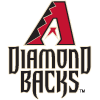 Geraldo Perdomo, SS, Diamondbacks: Perdomo generated very little interest during draft season despite being a 25-year-old who peaked as the 30th-ranked fantasy prospect and who had a clear path to an everyday job on Opening Day. The reason for that apathy was that we'd already seen Perdomo for over 400 games (split over four seasons), and we thought we had a pretty good idea of who he was, as he'd hit .235/.327/.330 with an average of 5.9 homers and 14.4 steals per 600 plate appearances. With Jordan Lawlar waiting in the wings, why waste a pick?
Geraldo Perdomo, SS, Diamondbacks: Perdomo generated very little interest during draft season despite being a 25-year-old who peaked as the 30th-ranked fantasy prospect and who had a clear path to an everyday job on Opening Day. The reason for that apathy was that we'd already seen Perdomo for over 400 games (split over four seasons), and we thought we had a pretty good idea of who he was, as he'd hit .235/.327/.330 with an average of 5.9 homers and 14.4 steals per 600 plate appearances. With Jordan Lawlar waiting in the wings, why waste a pick?
That process made some sense but left out a key variable: Perdomo has steadily improved his ability to make contact, cutting his strikeout rate from 20.6 percent in 2022 to 17.4 percent in 2023 and 14.9 percent in 2024. His batting average rose from .195 to .246 to .273 in those seasons as well. When Perdomo struck out just 2.9 percent of the time through his first 16 games (while hitting .333), that was more than enough to make him worth taking a chance on.
Those who took that early leap were rewarded with a career year from Perdomo, who became one of the most valuable players in all of baseball. He's cut his strikeout rate again to 11.0 percent, and crucially, he's finally gotten above a 30 percent hard-hit rate (31.5 percent), helping him to 19 homers to go with his 26 steals, 96 runs, 97 RBI and .290 average.
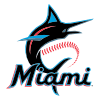 Agustin Ramirez, C, Marlins: A small minority of drafters were willing to spend a late-round pick to draft and stash Ramirez despite the fact that he played for a Marlins organization which rarely displays much urgency about putting the best possible team on the field. As it turns out, those drafters were onto something and had to wait less than a month for their man to arrive, while the rest of us were stuck fighting for him with our FAAB dollars in late April.
Agustin Ramirez, C, Marlins: A small minority of drafters were willing to spend a late-round pick to draft and stash Ramirez despite the fact that he played for a Marlins organization which rarely displays much urgency about putting the best possible team on the field. As it turns out, those drafters were onto something and had to wait less than a month for their man to arrive, while the rest of us were stuck fighting for him with our FAAB dollars in late April.
Three homers, four multi-hit games and a steal in his first five games created quite a scramble, but those who paid up for the rookie catcher were richly rewarded, as he sits seventh in earned value at the position. He's the rare catcher who can contribute across all five categories, with his 14 steals tying him with Cal Raleigh for the most among all backstops this season and the third-highest total among all catchers in the last 16 years. Interestingly, his sprint speed is poor (31st percentile) and he didn't steal a single base for over three months (from April 22 to July 23), so it looked like the steals he showed in the minors wouldn't translate, but he's since stolen 13 bases across his last 53 games, so it's reasonable to expect him to continue to run next season.
As for what the rest of his statline might look like next season, it's also fair to expect his batting average to rise from its current mark of .234 to somewhere much closer to his .273 xBA, as he hits the ball both often (19.0 percent strikeout rate) and hard (47.6 percent hard-hit rate). Combine that with his 21 homers and you have an excellent offensive catcher. There is one remaining problem, however, and that's his very poor defense. Statcast has him in the first percentile in both blocking and throwing runners out, and merely average at framing. That may affect his value in future years if he's forced to move to move off of catcher, but as long as he's eligible at the position, he'll provide rare all-around value.
Top Undrafted Hitters
These eight hitters have been worth at least $1 in 12-team roto leagues but were not drafted in any of the 234 RotoWire Online Championship leagues.
| Player | Team | Pos | EV Rank | Value |
|---|---|---|---|---|
| Trent Grisham | NYY | OF | 97 | $13.2 |
| Kyle Stowers | MIA | OF | 98 | $13.0 |
| Mickey Moniak | COL | OF | 106 | $11.7 |
| Addison Barger | TOR | 3B/OF | 171 | $6.5 |
| Zach McKinstry | DET | 2B/SS/3B/OF | 180 | $5.7 |
| Isaac Collins | MIL | OF | 197 | $4.1 |
| Wilmer Flores | SF | 1B | 246 | $1.3 |
| Jake Mangum | TB | OF | 249 | $1.2 |
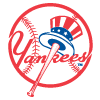 Trent Grisham, OF, Yankees: Not a single drafter in any of the 234 RotoWire Online Championship leagues thought that Grisham was worth even a last-round pick, and it's hard to blame them. He'd never hit more than 17 homers in any of his six major-league seasons and had failed to clear the Mendoza Line in any of the last three years. He also appeared to be stuck on the short side of a platoon to begin the season, an odd role for a left-handed bat.
Trent Grisham, OF, Yankees: Not a single drafter in any of the 234 RotoWire Online Championship leagues thought that Grisham was worth even a last-round pick, and it's hard to blame them. He'd never hit more than 17 homers in any of his six major-league seasons and had failed to clear the Mendoza Line in any of the last three years. He also appeared to be stuck on the short side of a platoon to begin the season, an odd role for a left-handed bat.
Grisham started picking up more at-bats just a week into the season while Cody Bellinger dealt with a minor back issue, and his early performances were so strong that the Yankees couldn't take him out of the lineup. By April 6, he was hitting .455 with three homers, and by May 13, he was still hitting .294 and had homered 12 times in 35 games. Crucially, he had struck out just 18.7 percent of the time up to that point, a big improvement on his 28.0 percent strikeout rate over the three previous years.
If you saw Grisham's improved contact ability and uptick in at-bats and jumped in early, figuring you were merely riding the hot hand, you would have enjoyed the majority of his 33 homers, 82 runs and 72 RBI on the season. It's worth noting, though, that his improved contact ability took a big step back after the first quarter of the season. He struck out 24.7 percent of the time since May 14 while hitting just .221. Additionally, his previously strong glove graded out poorly this season, so there's no guarantee the Yankees will feel comfortable entering 2026 with him as their primary center fielder.
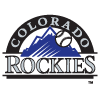 Mickey Moniak, OF, Rockies: Nobody wanted Moniak during draft season, and to be fair, neither did the Angels, the team who employed him up until two days before Opening Day, when he was released and subsequently signed by the Rockies. But while ignoring a player who had hit .230/.272/.402 over parts of five seasons and was fighting to be a fifth outfielder in Los Angeles is one thing, ignoring the same player when he's set for a large-side platoon role in Colorado is another.
Mickey Moniak, OF, Rockies: Nobody wanted Moniak during draft season, and to be fair, neither did the Angels, the team who employed him up until two days before Opening Day, when he was released and subsequently signed by the Rockies. But while ignoring a player who had hit .230/.272/.402 over parts of five seasons and was fighting to be a fifth outfielder in Los Angeles is one thing, ignoring the same player when he's set for a large-side platoon role in Colorado is another.
Grabbing Moniak in the first FAAB period after Opening Day based purely on his move to Coors Field would have been worth considering, though it took until the second week of the season for him to prove he'd be starting regularly against righties. Those who grabbed him early enough will have gotten almost an entire season worth of production from a player who has performed as a ninth-round value in 12-team leagues thus far, hitting .270 with 24 homers, 61 runs, 68 RBI and nine steals.
It was exactly the sort of well-rounded performance the Phillies likely envisioned when they selected him first overall back in 2016, and while it's tempting to point to Moniak's long track record of failure and write off 2025 as a Coors-related fluke, that doesn't seem to be the case. Moniak's strong batting average wasn't due to a Coors-inflated BABIP, as his stood at just .306. Instead, he cut a strikeout rate which sat at 32.3 percent over his first five seasons all the way down to 23.8 percent, and he improved his hard-hit rate from 35.7 percent all the way to 45.0 percent. There are still outstanding issues such as a low walk rate (4.9 percent) and an inability to hit lefties, but this has all the markers of an age-27 breakout, giving reason to believe Moniak could sustain a similar level of performance next year.
Top Widely-Available Pitchers
These 11 pitchers have been worth at least $1 in 12-team roto leagues according to our earned value calculator and were drafted in at least one RotoWire Online Championship league, yet fewer than 10 percent of such leagues.
| Player | Team | Pos | Rank | Value | ADP | Drafted % |
|---|---|---|---|---|---|---|
| Andrew Abbott | CIN | SP | 108 | $11.4 | 360.4 | 3.8% |
| Adrian Morejon | SD | RP | 118 | $10.4 | 360.9 | 1.3% |
| Quinn Priester | MIL | SP | 120 | $10.2 | 361.0 | 0.4% |
| Emilio Pagan | CIN | RP | 128 | $9.6 | 361.0 | 0.9% |
| Will Vest | DET | RP | 164 | $7.0 | 360.9 | 0.9% |
| Dennis Santana | PIT | RP | 176 | $6.1 | 360.5 | 3.0% |
| Abner Uribe | MIL | RP | 214 | $3.3 | 361.0 | 0.4% |
| Bryan Abreu | HOU | RP | 227 | $2.3 | 358.7 | 9.0% |
| Garrett Whitlock | BOS | RP | 230 | $2.1 | 360.4 | 5.6% |
| Colin Rea | CHC | SP | 241 | $1.4 | 361.0 | 0.4% |
| Dean Kremer | BAL | SP | 253 | $1.1 | 360.2 | 5.1% |
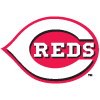 Andrew Abbott, SP, Reds: As you can see from the above table as well as the one in the next section, it's rare for a starting pitcher who wasn't widely selected on draft day to finish the year as a positive value for fantasy purposes. That reinforces the fact that bidding for starters is often a short-term game, whether that's streaming borderline pitchers in good matchups or adding a newly-promoted flamethrower in midseason only to drop him a month later when he hits the injured list.
Andrew Abbott, SP, Reds: As you can see from the above table as well as the one in the next section, it's rare for a starting pitcher who wasn't widely selected on draft day to finish the year as a positive value for fantasy purposes. That reinforces the fact that bidding for starters is often a short-term game, whether that's streaming borderline pitchers in good matchups or adding a newly-promoted flamethrower in midseason only to drop him a month later when he hits the injured list.
Abbott is a rare exception to the rule. The lefty's 3.78 ERA over his first two seasons was a perfectly respectable mark, but it came with a 4.58 SIERA and 4.76 xFIP, and his strikeout rate had plummeted to 19.5 percent last season. There just didn't seem to be much incentive to take a chance on a low-strikeout pitcher continuing to outperform his peripherals, especially with half his games coming at one of the most hitter-friendly parks in the league in Cincinnati. Even those who would otherwise have taken a chance on him were turned off by the fact that he was set to miss the first two weeks of the season while recovering from a shoulder strain, one which ended his 2024 season early.
Abbott arrived in mid-April looking like he had something to prove, striking out 16 batters in 11 innings across his first two starts while allowing just two runs on four hits and three walks. Those who picked him up at that point were rewarded with a 2.88 ERA and 1.19 WHIP across 26 starts the rest of the way, giving him a 2.80 ERA and 1.16 WHIP on the year. His ERA estimators (4.33 xFIP, 4.22 SIERA) continue to trail his ERA by a wide margin, but at this point, it's worth considering that the unusual batted ball profile he allows might have something to do with that, rather than writing is off as mere luck. Abbott's 31.4 percent groundball rate (the lowest among qualified starters) would ordinarily be a big red flag, but his 33.7 percent hard-hit rate is third-best among that same group and a near match for his 33.5 percent mark from last season. A steady stream of weak flyballs equals a steady stream of easy outs.
 Emilio Pagan, RP, Reds: Pagan was selected in just two RotoWire Online Championship drafts this past offseason, fewer than fellow Reds relievers Taylor Rogers (48), Scott Barlow (39), Graham Ashcraft (29), Tony Santillan (18) and of course Alexis Diaz (223), who was set to miss the start of the season with a hamstring injury. Diaz's ineffectiveness in 2024 meant that whoever took the temporary job in his absence had a real chance of winning it permanently.
Emilio Pagan, RP, Reds: Pagan was selected in just two RotoWire Online Championship drafts this past offseason, fewer than fellow Reds relievers Taylor Rogers (48), Scott Barlow (39), Graham Ashcraft (29), Tony Santillan (18) and of course Alexis Diaz (223), who was set to miss the start of the season with a hamstring injury. Diaz's ineffectiveness in 2024 meant that whoever took the temporary job in his absence had a real chance of winning it permanently.
While Pagan did enter the year with 33 career saves under his belt, it had also been three years since he'd finished with more than one save, and neither his 3.78 career ERA nor his 4.50 ERA in 2024 looked like closer material. Even the Reds themselves seemingly didn't think Pagan would be their closer, as it was Ian Gibaut who earned the save chance on Opening Day. Gibaut blew that chance, however, and it was Pagan who picked up the save in the second game of the year, setting up a FAAB scramble in the first waiver period after Opening Day.
Such bidding wars can often lead to large amounts of wasted money, as the player who gets the first save in an open bullpen competition isn't always the one who gets the second or third. Pagan, however, quickly earned manager Terry Francona's trust, and holding a closer job for a manager who prefers to pick a guy and stick with him has allowed Pagan to become one of the year's top fantasy closers. He currently sits eighth in the league with 29 saves, pairing that figure with a 3.06 ERA, 0.94 WHIP and 30.6 percent strikeout rate.
Top Undrafted Pitchers
These 12 pitchers have been worth at least $1 in 12-team roto leagues but were not drafted in any of the 234 RotoWire Online Championship leagues.
| Player | Team | Pos | Rank | Value |
|---|---|---|---|---|
| Trevor Rogers | BAL | SP | 72 | $16.7 |
| Cade Horton | CHC | SP | 129 | $9.6 |
| Shawn Armstrong | TEX | RP | 159 | $7.2 |
| Noah Cameron | KC | SP | 166 | $6.9 |
| Ronny Henriquez | MIA | RP | 179 | $5.8 |
| Eric Lauer | TOR | SP/RP | 209 | $3.4 |
| Eduard Bazardo | SEA | RP | 217 | $3.1 |
| Brad Keller | CHC | RP | 229 | $2.3 |
| Mike Vasil | CWS | RP | 235 | $1.7 |
| Daniel Palencia | CHC | RP | 238 | $1.6 |
| Tyler Rogers | NYM | RP | 240 | $1.4 |
| Randy Rodriguez | SF | RP | 252 | $1.1 |
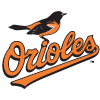 Trevor Rogers, SP, Orioles: The deal which sent Rogers from Miami to Baltimore for Connor Norby and Kyle Stowers at least year's deadline was looking like a lose-lose affair until both Rogers and Stowers broke out this season. After showing promise early in his career, Rogers' 5.09 ERA and 1.52 WHIP over the last three years left little reason to take a chance on him last winter, especially after he showed up to camp dealing with a knee injury, one which kept him out of game action until late April.
Trevor Rogers, SP, Orioles: The deal which sent Rogers from Miami to Baltimore for Connor Norby and Kyle Stowers at least year's deadline was looking like a lose-lose affair until both Rogers and Stowers broke out this season. After showing promise early in his career, Rogers' 5.09 ERA and 1.52 WHIP over the last three years left little reason to take a chance on him last winter, especially after he showed up to camp dealing with a knee injury, one which kept him out of game action until late April.
Rogers had completed his rehab by mid-May but hadn't pitched well and was optioned to Triple-A Norfolk after coming off the injured list. He got an opportunity in a doubleheader in late May but was optioned despite a strong start. It wasn't until mid-June that Roges was up for good, and even then, he didn't do much to convince anyone to spend their FAAB dollars, allowing three runs in 2.1 innings in his first start after his return.
Those three runs turned out to be the most Rogers would allow all season (unless he gets lit up by the Yankees this Friday). The southpaw would allow just 14 runs (13 earned) across his next 15 starts, giving him a 1.35 ERA and 0.87 WHIP for the year. His strikeout rate, which had fallen to 17.3 percent last year, is back up to 24.5 percent, and he's paired that with a career-best 6.4 percent walk rate and an above-average 46.4 percent groundball rate. There's plenty of good luck in his line as well, such as his .231 BABIP, 85.9 percent strand rate and 2.9 percent HR/FB rate, but even an ERA in line with his 3.54 xFIP or 3.67 SIERA would represent a great bounceback campaign. Those who took a chance on a formerly interesting pitcher who was still just 27 years old and who had a pathway to stick around long-term were rewarded with a player who's performed like a sixth-round pick in just over half a season.
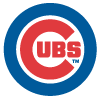 Cade Horton, SP, Cubs: Horton's season debut came around the same time as Rogers', but it wasn't particularly encouraging, as he allowed three runs in four innings as a bulk reliever. He was used as a proper starter in his next outing, but he again hardly turned heads, striking out just two in five innings against the lowly White Sox while giving up three runs on seven hits. It was an unremarkable start to a big-league career for a player who was selected seventh overall in 2022 and who had cruised through the minors with a 2.79 ERA, 1.03 WHIP and 31.7 percent strikeout rate across 36 starts.
Cade Horton, SP, Cubs: Horton's season debut came around the same time as Rogers', but it wasn't particularly encouraging, as he allowed three runs in four innings as a bulk reliever. He was used as a proper starter in his next outing, but he again hardly turned heads, striking out just two in five innings against the lowly White Sox while giving up three runs on seven hits. It was an unremarkable start to a big-league career for a player who was selected seventh overall in 2022 and who had cruised through the minors with a 2.79 ERA, 1.03 WHIP and 31.7 percent strikeout rate across 36 starts.
Those who snapped up Horton anyway, placing a bet on his pedigree and the fact that the Cubs had spots at the back of their rotation open for the taking, have been rewarded with an excellent season, as Horton has gone on to produce a 2.66 ERA and 1.10 WHP while winning 11 games. While he's now more than 100 innings past the total of 34.1 he threw last year on the way back from Tommy John surgery, he's only gotten better as the season has gone on, allowing a total of six runs across his last 11 starts, setting himself up to be the Cubs' ace in the playoffs.
As with Rogers, it's taken some good luck for things to turn out quite this well for Horton. He's benefited from a .261 BABIP as well as a 6.8 percent HR/FB rate, and his xFIP (4.29) and SIERA (4.26) suggest he's due for quite a bit of regression. There are positives in the underlying numbers as well, though, as he has an above-average whiff rate (25.6 percent) despite a below-average strkeout rate (20.4 percent). He's been turning those whiffs into Ks more recently, too, striking out over a batter per inning across his last eight starts. The future looks bright for Horton, even if he'll be hard-pressed to repeat his current ERA.









